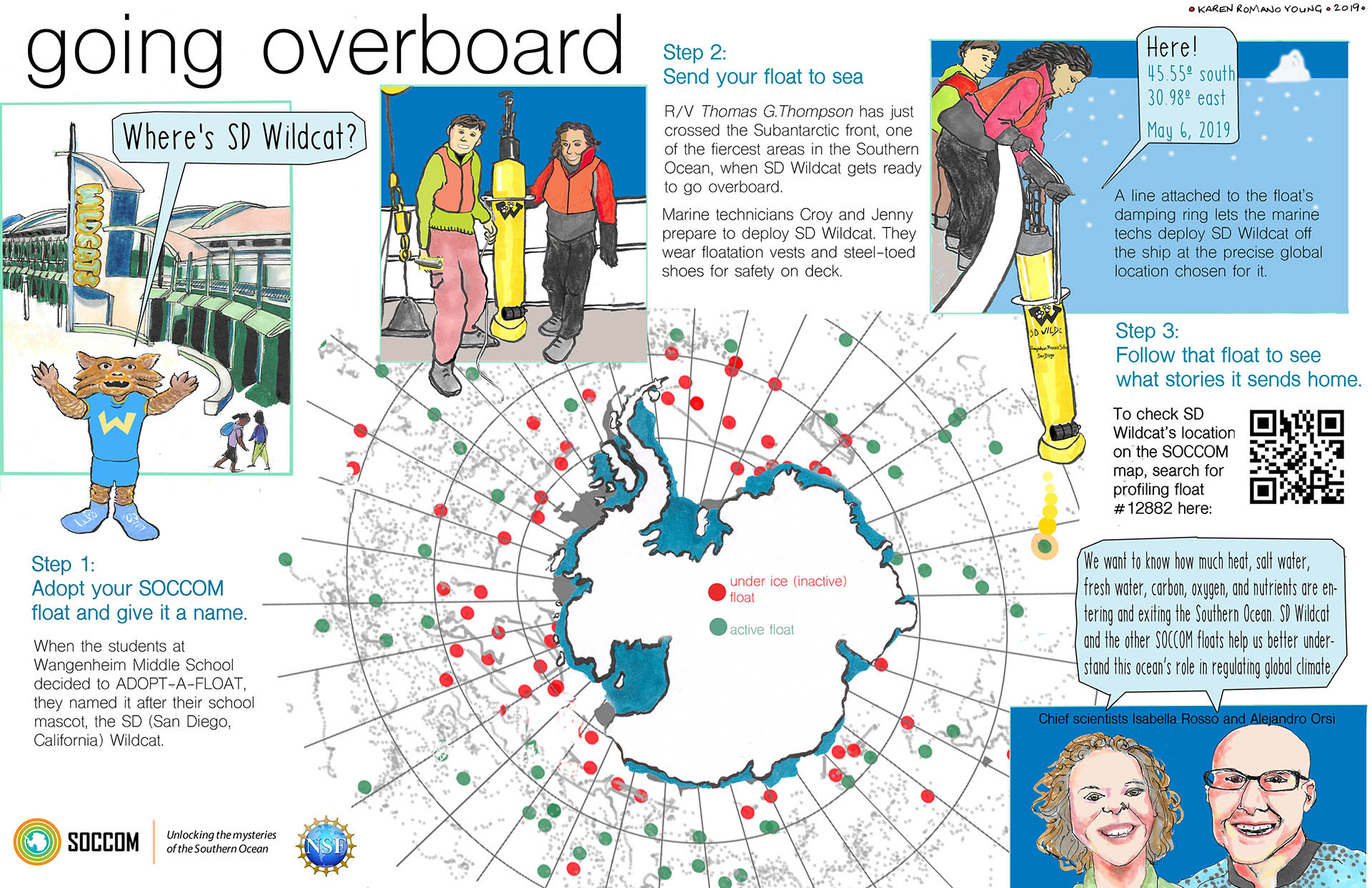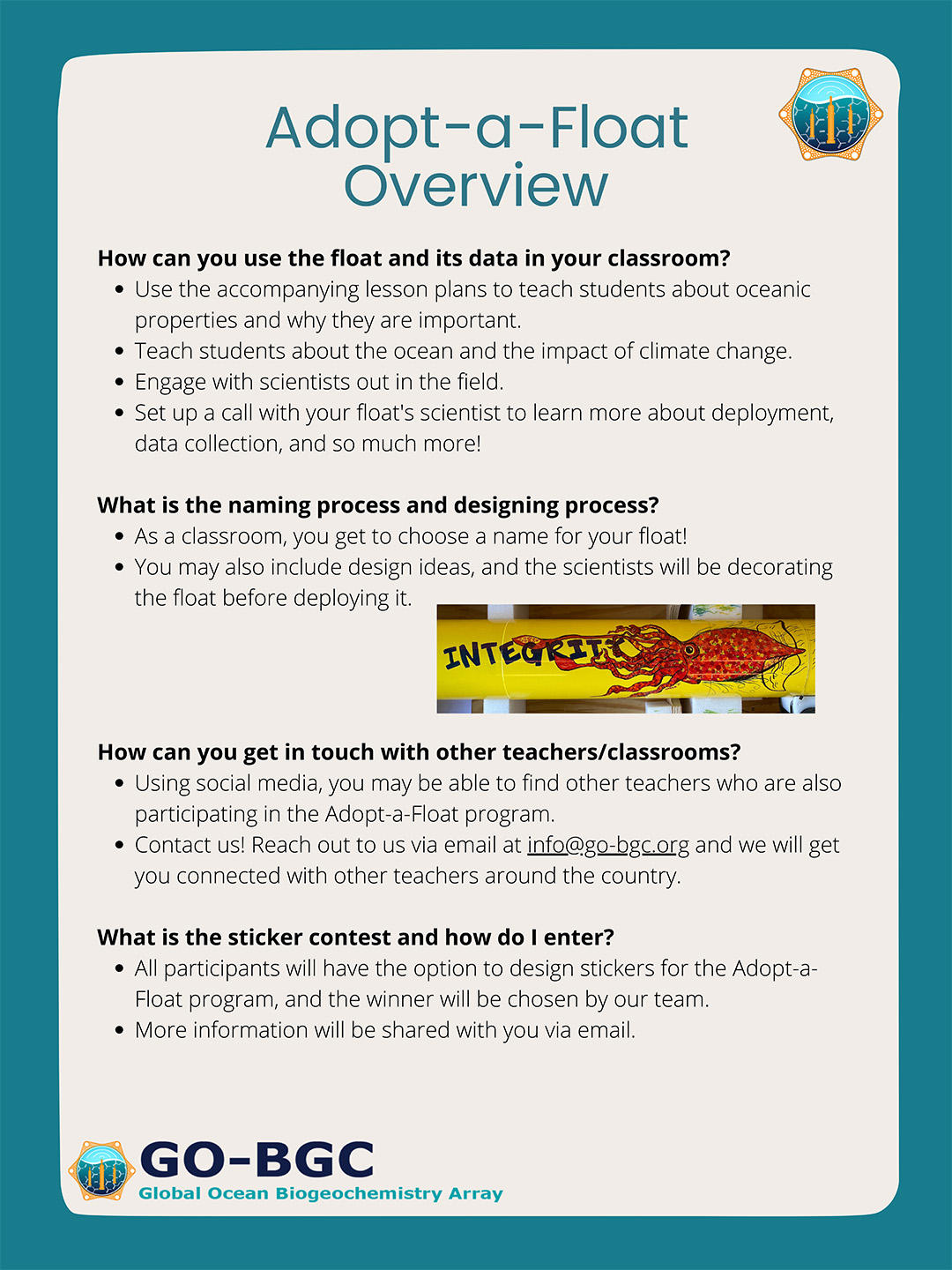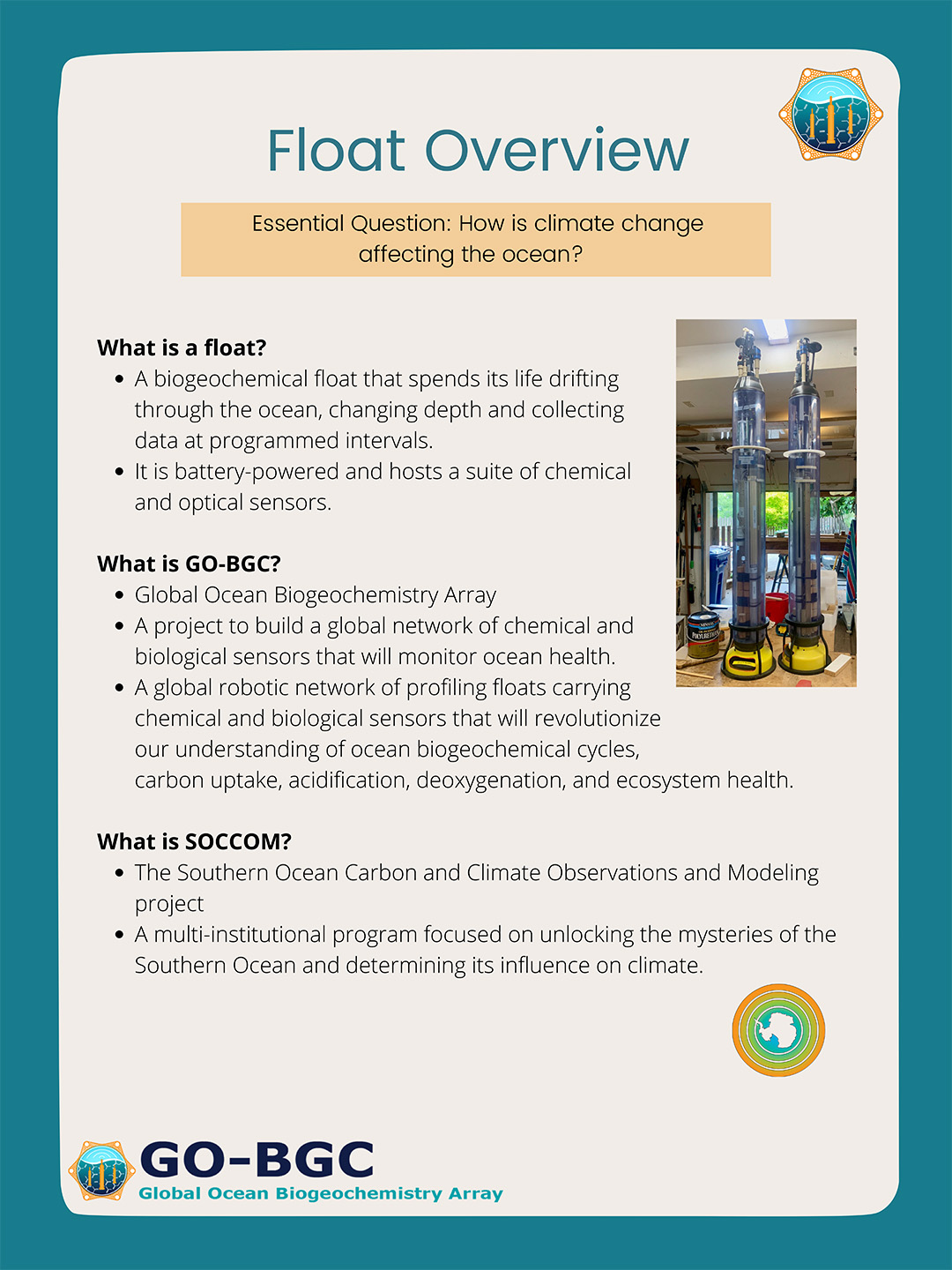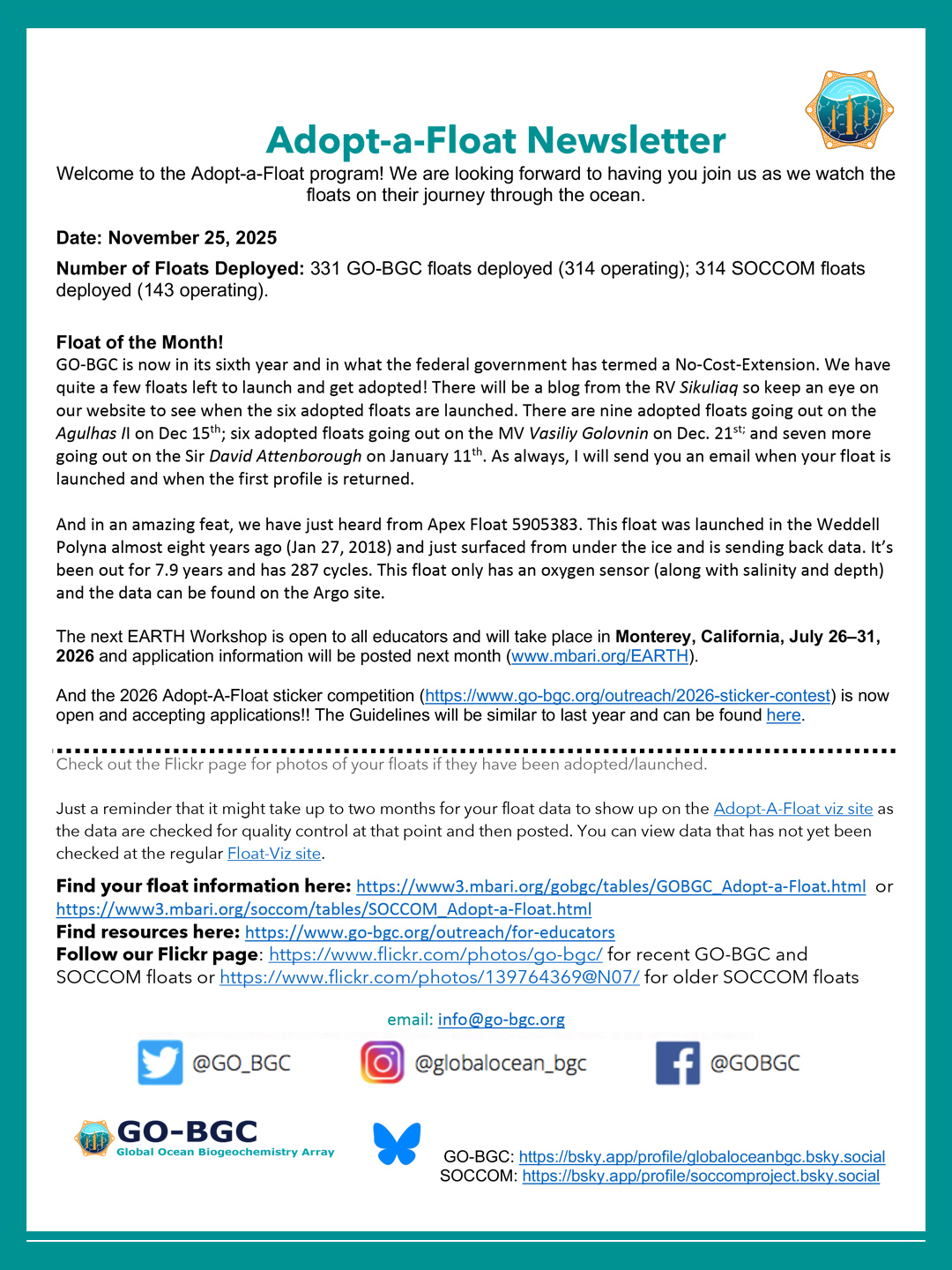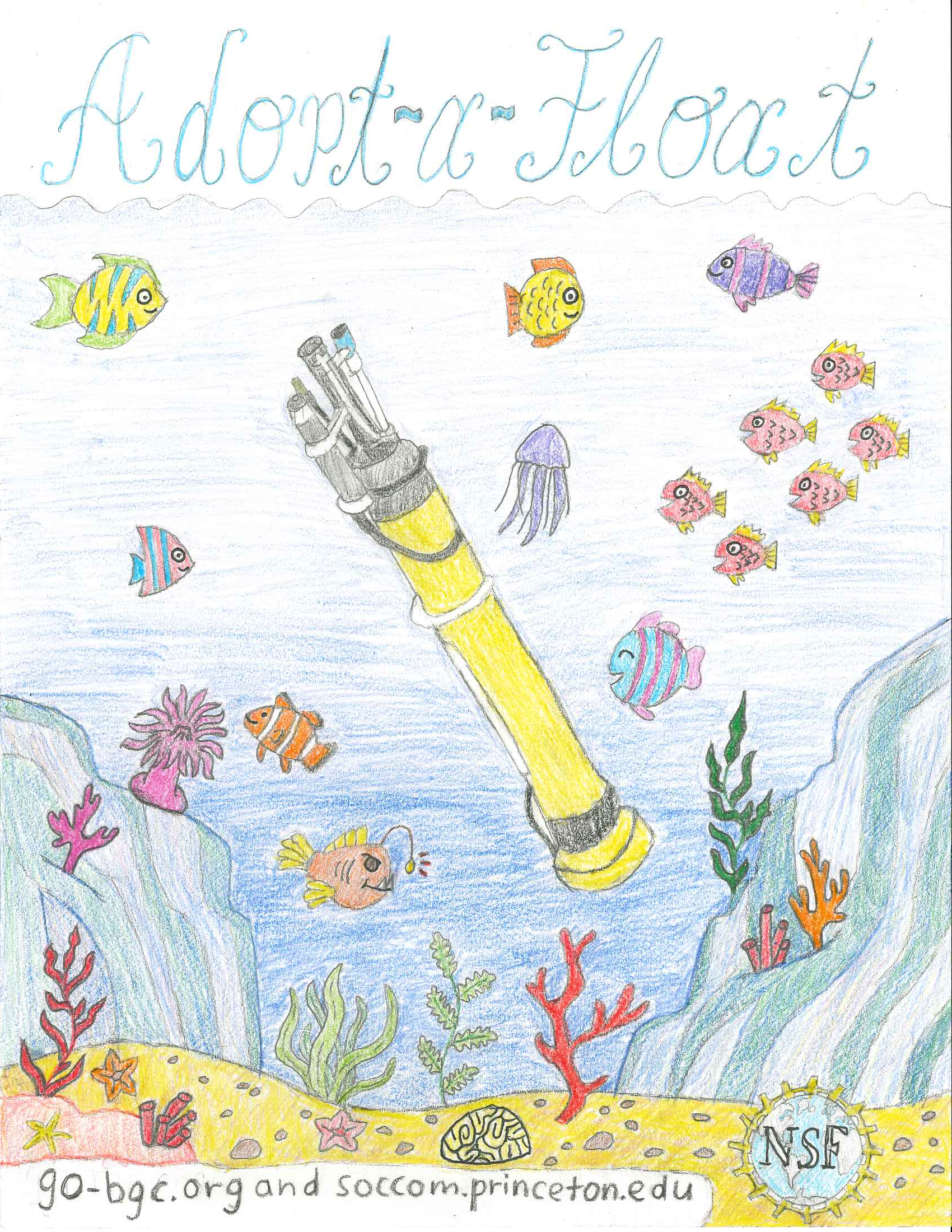Adopt-A-Float
Engage directly with world-class scientists and learn about their biogeochemistry and climate change research
Adopted Floats
Floats have been adopted by schools and other organizations around the world. You can see these names from the Adopt-A-Float Tables that show all of the adopted floats, their names, and their WMO (World Meteorological Organization) number.
The Adopt-A-Float Program
We are partnering with teachers and classrooms across the country to inspire and educate students about global ocean biogeochemistry and climate change through our “Adopt-A-Float” initiative. This program creates a powerful opportunity for students of all ages to engage directly with world-class scientists and learn about their research by naming and tracking BGC (biogeochemical) floats. There is no financial cost to adopting a float!
This program has enjoyed tremendous success. From just one classroom in just one school in 2015, the pilot now encompasses over 50 schools across the US as well as Chile, Canada, Australia, Poland, and the U.K.. Adopted float names have honored explorers (RE Byrd, RF Scott, EH Shackleton), scientists (Darwin, Mann, Jorge) and school mascots. We ask that you follow our naming guidelines when selecting a name.
Teachers, students and scientists have expressed strong support for the program, citing a unique opportunity to interact around a shared passion for not only better understanding the Southern Ocean’s outsized role in our climate system but also improving climate models for the global ocean.
Southern Ocean Carbon and Climate Observations and Modeling (SOCCOM) floats have been deployed for the last six years and are BGC floats that are placed in the Southern Ocean while GO-BGC floats will be placed elsewhere in the Global Ocean.
We are looking forward to increasing our understanding of the global ocean as we start the GO-BGC effort and invite you to join us by adopting your own float.
Other Adopt-A-Float programs and resources can be found at the following websites:
-
- Canada – Dalhousie University
- France – Institute de la Mer de Villefranche
- USA – Princeton University/SOCCOM now merged with GO-BGC
- USA – NOAA and Pacific Marine Environomental Laboratory
- Global ARGO program
Interested in adopting a float?
The process is simple and there is NO COST to educators. Once we receive your application, we will pair your class with scientists scheduled to deploy floats. The students can give a name to a soon-to-be-deployed float, and follow its progress through blogs written by their paired scientists. Check out all of the previously adopted floats here.
What can we do with our adopted float?
Educators can use floats and float data to teach about the ocean, climate change, technology, engineering, mathematics, and so much more! Visit our For Educators page to find resources like videos, animations, information pages, lesson plans, and activities that focus on floats and float data.
Program Information
Adopt-a-Float Overview
Learn more about what Adopt-a-Float is and how to use it in your classroom.
Float Overview
An introduction to GO-BGC, SOCCOM, what a float is, and the data it collects!
Newsletters
Get the latest Adopt-a-Float news and information in our monthly newsletters.
Sticker Contest
The 2025 winner sticker (above) comes from Brandon Wong at Chatham High School in New Jersey. The 2026 competition is now open and submissions are welcome until Feb 9, 2026. You can find more submission information here.
